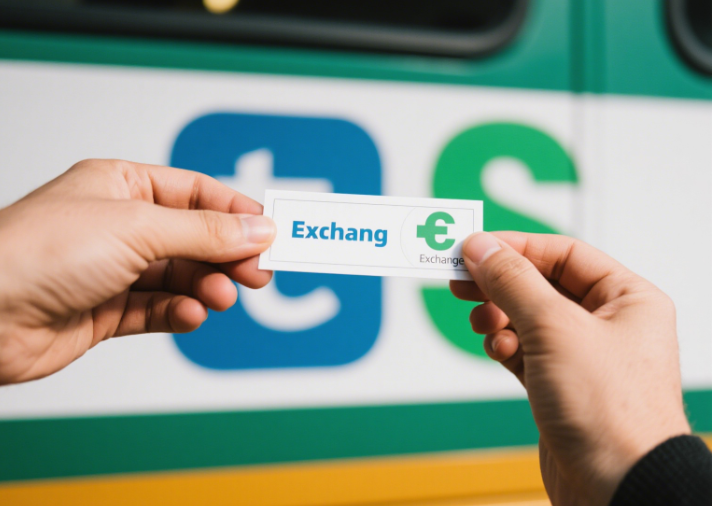In the dynamic landscape of cryptocurrency, token exchange stands as the backbone of global digital asset trading. As the bridge between traditional finance and the decentralized economy, token exchanges facilitate the seamless transfer of value across blockchain networks, driving innovation and accessibility in the crypto space. For platforms like Bitora, understanding the intricacies of token exchange is essential to delivering cutting-edge insights that empower traders, investors, and developers alike.
What is a Token Exchange?
A token exchange is a digital marketplace where users can buy, sell, or swap cryptocurrencies and tokens. Unlike traditional stock exchanges, these platforms operate 24/7 and support a vast array of assets, from established coins like Bitcoin and Ethereum to niche tokens from emerging projects. The core function of a token exchange is to provide liquidity, price discovery, and security—critical components that sustain the crypto ecosystem’s growth.
Token exchanges can be categorized into two primary types: centralized exchanges (CEXs) and decentralized exchanges (DEXs). CEXs, such as Binance and Coinbase, act as intermediaries, holding users’ funds and facilitating trades through order books. They offer user-friendly interfaces and high liquidity but rely on centralized governance, which can raise concerns about transparency and control.
DEXs, like Uniswap and SushiSwap, operate on smart contracts, enabling peer-to-peer trading without intermediaries. They prioritize decentralization, privacy, and autonomy, allowing users to retain custody of their assets. However, DEXs often face challenges with liquidity fragmentation and impermanent loss, making them better suited for advanced users.
The Role of Token Exchanges in the Crypto Ecosystem
Token exchanges are far more than trading platforms; they are catalysts for crypto adoption. Here’s how they shape the industry:
- Liquidity Provision: Exchanges aggregate buy and sell orders, ensuring that users can enter or exit positions with minimal slippage. High liquidity is vital for price stability and market health.
- Accessibility: By onboarding users through fiat-to-crypto gateways, exchanges lower the barrier to entry for newcomers, driving mainstream adoption.
- Market Innovation: Exchanges introduce new products like futures, options, and yield farming, expanding the utility of tokens beyond simple transactions.
- Network Effects: As more users join an exchange, its ecosystem grows, attracting more projects and liquidity—a self-reinforcing cycle that benefits the entire crypto space.
For Bitora’s audience, staying informed about these roles helps decode market trends. For example, the rise of decentralized finance (DeFi) has fueled demand for DEXs, with platforms like PancakeSwap seeing billions in trading volume, a trend Bitora’s analytics regularly highlight.

Technological Evolution of Token Exchanges
The evolution of token exchange technology reflects the industry’s drive for efficiency and security:
- Order Book vs. AMM Models: Traditional order books are giving way to automated market makers (AMMs), which use algorithms and liquidity pools to price assets. AMMs dominate DEXs, enabling instant swaps but requiring liquidity providers to bear risks.
- Cross-Chain Swaps: With the rise of multi-chain ecosystems, exchanges are integrating cross-chain protocols like Polkadot and Cosmos, allowing users to trade tokens across different blockchains without bridging assets.
- Regulatory Compliance: As governments scrutinize crypto, exchanges are adopting Know Your Customer (KYC) and Anti-Money Laundering (AML) measures, balancing security with decentralization.
- AI and Machine Learning: Advanced algorithms now detect fraud, optimize trading strategies, and personalize user experiences, enhancing both security and profitability.
Bitora’s commitment to tracking technological advancements ensures its readers stay ahead of the curve. For instance, the platform’s coverage of new exchange features—such as Binance’s launch of a Web3 wallet or Coinbase’s integration with Ethereum Layer 2 solutions—provides actionable insights for tech-savvy users.
Challenges and Future Trends in Token Exchanges
Despite their growth, token exchanges face significant challenges:
- Regulatory Uncertainty: Governments worldwide are drafting laws that could reshape how exchanges operate, from tax reporting to asset classification.
- Security Risks: High-profile hacks, such as the 2022 Ronin Bridge exploit, highlight the need for robust security protocols, including cold storage and multi-signature wallets.
- Scalability: As crypto adoption grows, exchanges must handle higher transaction volumes, a challenge DEXs address through layer 2 solutions like Optimism and Arbitrum.
Looking ahead, the future of token exchanges lies in interoperability, decentralization, and institutional integration. Centralized exchanges may adopt more decentralized features, while DEXs could improve user experience to attract mainstream users. Cross-chain liquidity protocols and non-fungible token (NFT) exchanges will also play pivotal roles, creating a more interconnected crypto economy.
Conclusion: Navigating the Token Exchange Landscape with Bitora
In a market as volatile and innovative as crypto, understanding token exchanges is non-negotiable. Whether you’re a trader evaluating CEX vs. DEX strategies, an investor tracking liquidity trends, or a developer building on new exchange protocols, Bitora’s comprehensive coverage of token exchange dynamics equips you with the knowledge to thrive.
From real-time market data to in-depth analyses of regulatory shifts and technological breakthroughs, Bitora remains your trusted source for navigating the ever-evolving world of token exchanges. Stay ahead with Bitora’s insights and unlock the full potential of digital asset trading.









Leave A Reply